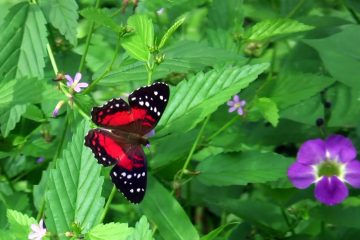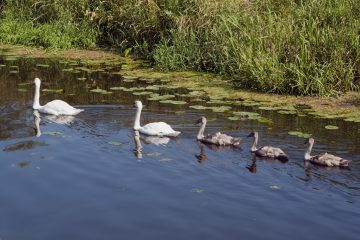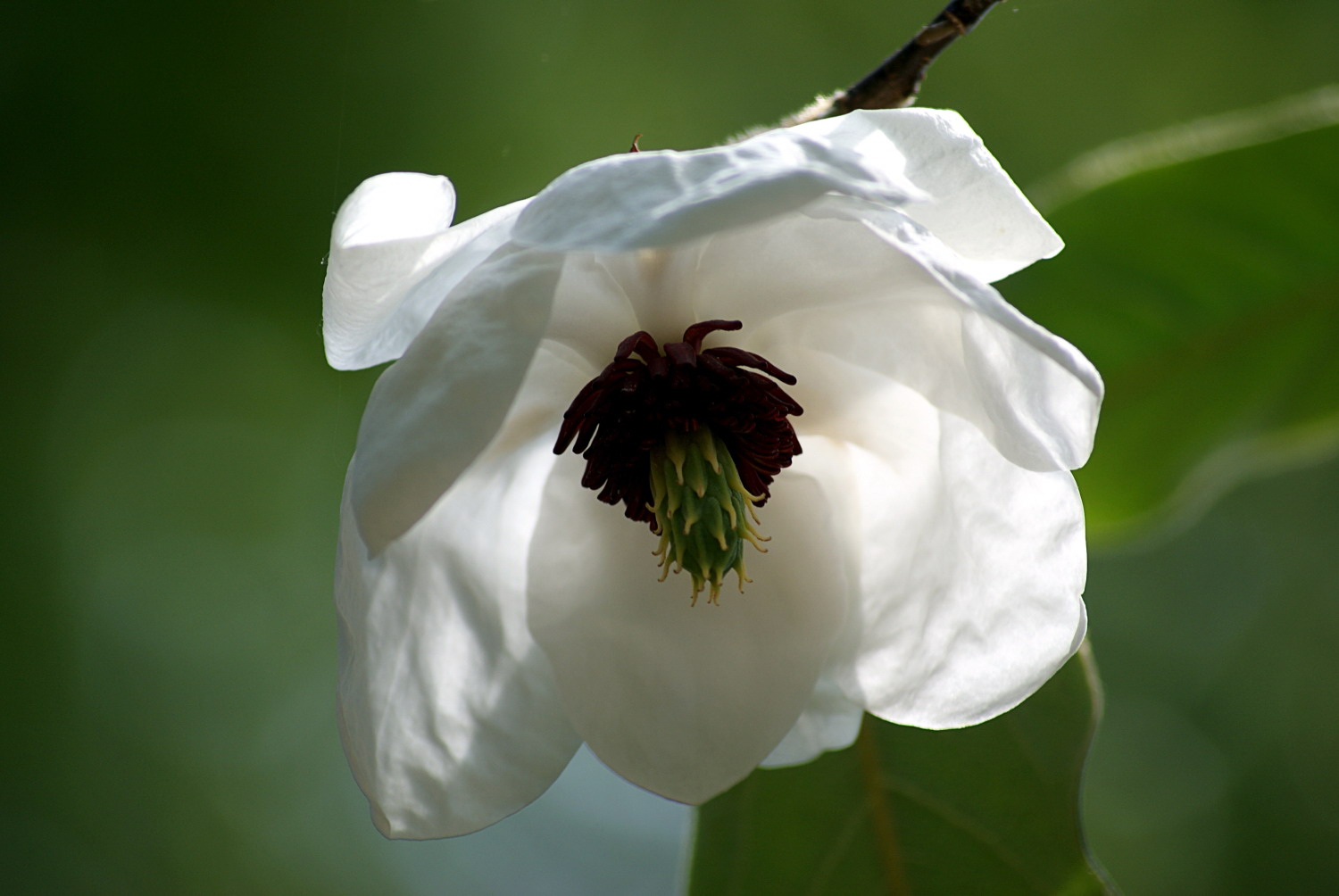Back in January in Grenada I met a learned man, humble and entertaining with a passion for his field of expertise. Starting at the roadside he began his lecture, for it was a lecture of sorts. Something repeated and practised for many years. Though now retired Dr G, this eminent botanist described the plants and their uses both current and historic. In many ways a style I have seen by others with their own passions and expertise.
Banana’s
A detailed explanation of the Banana followed, the whole family in fact. Starting with the parent of the modern Cavendish banana there in front of us with its hands of fruit filled with seeds. Through the use as a place to keep valuables during hurricanes and a cure for headaches. Beyond the roadside, there was a brief encounter with a small area of medicinal non-woody plants and herbs. Each with a discrete white sign lettered in black. From there a stout staff was required to navigate down into this mountainside botanical haven. Earth cut steps lead the way through the myriad shrubs and small trees. He stopped at a Papaya tree (Carica papaya) and picked a fruit but made no comment. As we advanced further into the jungle things both familiar by name or family were given their context in local uses along with the unfamiliar and unknown.
Chocolate & Papaya
Cocoa pods (Theobroma cacao) hanging from trunk and branch in hues of yellow, orange and red according to the variety. Some more deeply ridged than others. Occasionally as we entered a new area a gong was rung to announce our arrival to the upcoming forest. No shiny brass disc you understand but in keeping with his whimsy a frying pan with a spoon hanging adjacent or a hubcap and a spanner. Then ahead a short distance a small enclosure had a planned visit and there the Papaya use became apparent. A Tortoise was awaiting the footsteps of Dr. G and the expectation of one of his favoured foods.
Spices
Large trees that had escaped the hurricanes force 10 years earlier by chance, robustness or because of the shelter available act as key points sheltering their more recent offspring. Nutmeg (Myristica fragrans), clove, allspice (Pimenta dioica) were given introductions, leaves to smell or growth habit to observe. At one point he moved to a clump of roots exposed and sliced a woody stem from it and exposed the moist interior. He proffered it to us as he had the allspice. Correctly I identified it as camphor. Having it labelled all my life as camphor wood I was surprised and then being told that it was the roots of the clove tree (Syzygium aromaticum), but this was a mistake; it merely has the same components I guess.
I will have to investigate this further as I note the name of the source of Camphor Wood is Cinnamomum camphora. At one stopping point, oranges were plucked from a tree for each of us to fortify and refresh. My first orange from tree to mouth in under a minute. Other fruits being offered were water lemons (like a yellow victoria plum) , penny piece (small yellow apple shape, smells like a plum, tastes like a Mango) and one or two others I don’t recall. One looks like a short bare cucumber and I was assured it was too sour to enjoy.
Passionate Whimsy
Throughout the walk across this seven-acre plot are items to amuse either due to the enforced attendance of the young or constant of green above and the brown underfoot. Yoghurt pots strung together 30 at a time tied between huge majestic mango trees indicating the breeze by their movement. Slices of aluminium siding acting like aerofoils and spinning with gusts of wind. The artistic area where the husks of coconut laid on their side and leaf supported by a twig become sails for a flotilla of boats on the forest floor. The bed of ginger growing within a submerged bedstead sinking into the leaf litter.
Words & Numbers
However, starting at the top of the slope and continuing down sayings are offered to the observer reflecting the views and beliefs of our guide ‘learn something every day’. White dots and symbols painted on the volcanic rocks present visual aids to other information. Dr Guido Marcel had noted to us that 3,6 and 9 are key numbers in the patterns of nature and also his regard for the number play these numbers have. Divide 3 by 2, 1.5. Add 1 to 5 get 6. Symbols also found, represent planting patterns to maximise growth within a given space. My favourite was a graphic he’d come across in the landscape. Now repeated by him here, that seemed to symbolise the face of a monkey.
Soundscape
Further down the valley we came across giant bamboo with stems at least as wide as a hand span and reaching the height of the tallest of the trees. They create a soundscape like no other as they rub together with their hollow chambered stems. When the knuckles snap past their neighbours stem the clunks and clacks. It resembles those heard on the tipping water features found in Japanese gardens. Their sound penetrates the jungle around with their low frequencies and a reflection of the breezes high above the listener.
Here was the end of the main event at the river, a boundary between two parishes. So for us it seemed now was only the long climb back up this mountain. It was however punctuated by the beautiful star-white sedge, mandarin and Grosse Peu trees on an old plantation track. From the latter, Dr Marcell gathered fruits for us to take with us. Later on the hot exposed country lane one of the first ripe Nutmeg of the season.
Return
Apart from the slight dehydration from the humid forest, it was a perfect few hours that I had not considered possible. One organised by my stepmother Joan which finished with the author signing my copy of his book “Caribbean Spice Island Plants”. As we approached the car for the journey back a sleek looking mammal dashed across the road. Back home it would have been a Stoat or Mink but here it was a Mongoose. Another first for me.


